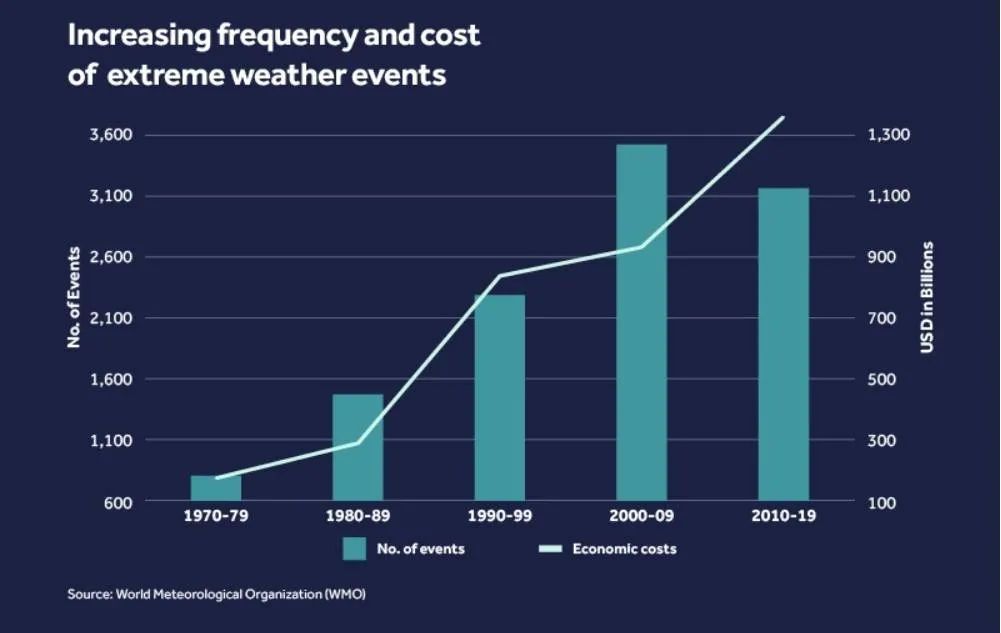Report: Economic costs of extreme weather could double
Istanbul, July 10 (Hibya)—Climate change has increased the frequency, severity, and unpredictability of extreme weather events. Given their increased frequency and magnitude, the costs of extreme weather events could nearly double this decade. Barclays Research analysts explore the causes and consequences for global industries, economies, and policymakers.
According to data from the World Meteorological Organization (WMO), the number of extreme weather events increased by a factor of five from 1970 to 2019, albeit declining slightly between the 2000s and the 2010s. In addition to becoming more frequent, extreme weather events have become more severe and unpredictable regarding timing and location.
While extreme events have increased more than five times over the same number of decades, our research analysts note that the cost of extreme events has risen nearly eight times globally, inflation-adjusted, since the 1970s. This equates to the cost per event increasing by almost 77 percent, which is inflation-adjusted, over the past five decades.
According to analysts' findings, as the frequency and severity of extreme weather events increase, so do their direct economic costs:
"At a macro level, vulnerabilities to storms and floods, increased water scarcity and droughts, disease prevalence, reduced agricultural output, and ecosystem changes may all lead to investment risks. However, in the face of these challenges, our analysts see significant growth potential, offering a ray of hope amid the storm.
"They believe that investors can navigate these risks by focusing on the potential for costly physical damage, lost time and productivity, climate-related migration, supply chain disruptions, and an overall increase in uncertainty, contributing to short- and long-term growth. These insights from our analysts can guide your investment decisions."
















